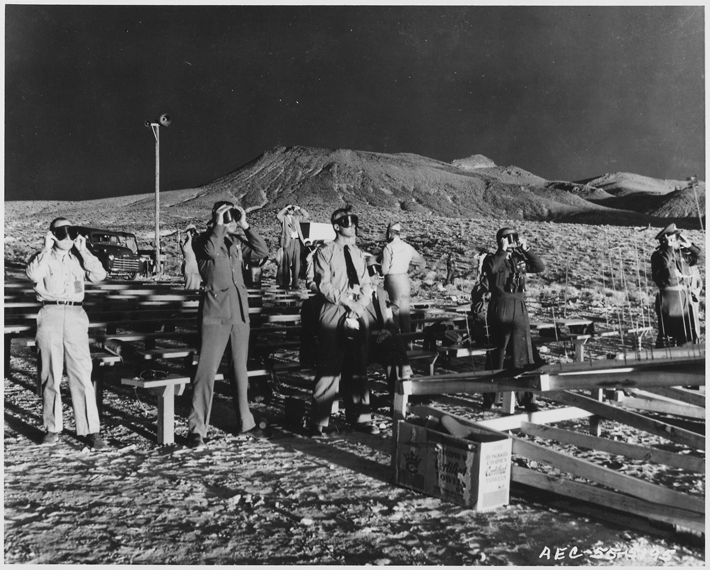by SAMIR S. PATEL (with BARRY YEOMAN)

Wearing protective goggles, observers from Canada and Britain watch MET (Operation Teapot), a 22-kiloton nuclear detonation above Frenchman Flat at the Nevada Test Site, on April 15, 1955. PHOTO/U.S. National Archives
As the beginning of the Atomic Age fades into history, archaeologists work to document a time of uncertainty and experimentation
The time: 1955. The place: a dry lakebed in southern Nevada called Frenchman Flat. An explosion equivalent to 22,000 tons of TNT creates a roiling mass of superheated, low-density gas. This fireball rises and collides with the surrounding air, creating turbulent vortices that suck smoke and debris up from the ground into a column. The “stem” rises into cooler, thinner air, where the ascent slows, debris disperses, and moisture condenses to form a “cap.” Over days and even months, nuclear fallout spreads and drifts to Earth.
Between 1951 and 1962, well after the detonations at Hiroshima and Nagasaki, 14 mushroom clouds rose above this corner of the Nevada desert. They were part of a long, complex, and varied program of nuclear testing, and each had a broad audience. One part was global, as the Cold War superpowers, the United States and the Soviet Union, squared off; the other was sitting on benches on an overlook seven miles away. A stream of political and military VIPs sat there, squinting at blasts and being buffeted by powerful shockwaves. Today, 11 rows of the benches sit under the desert sun, with nails jutting from their warped, desiccated planks. “I like these benches,” says Colleen Beck, an archaeologist with the Desert Research Institute (DRI), part of the Nevada System of Higher Education. “While hardly anyone comes here now, you can really imagine people sitting on them, watching a test.”
Archaeology for more
